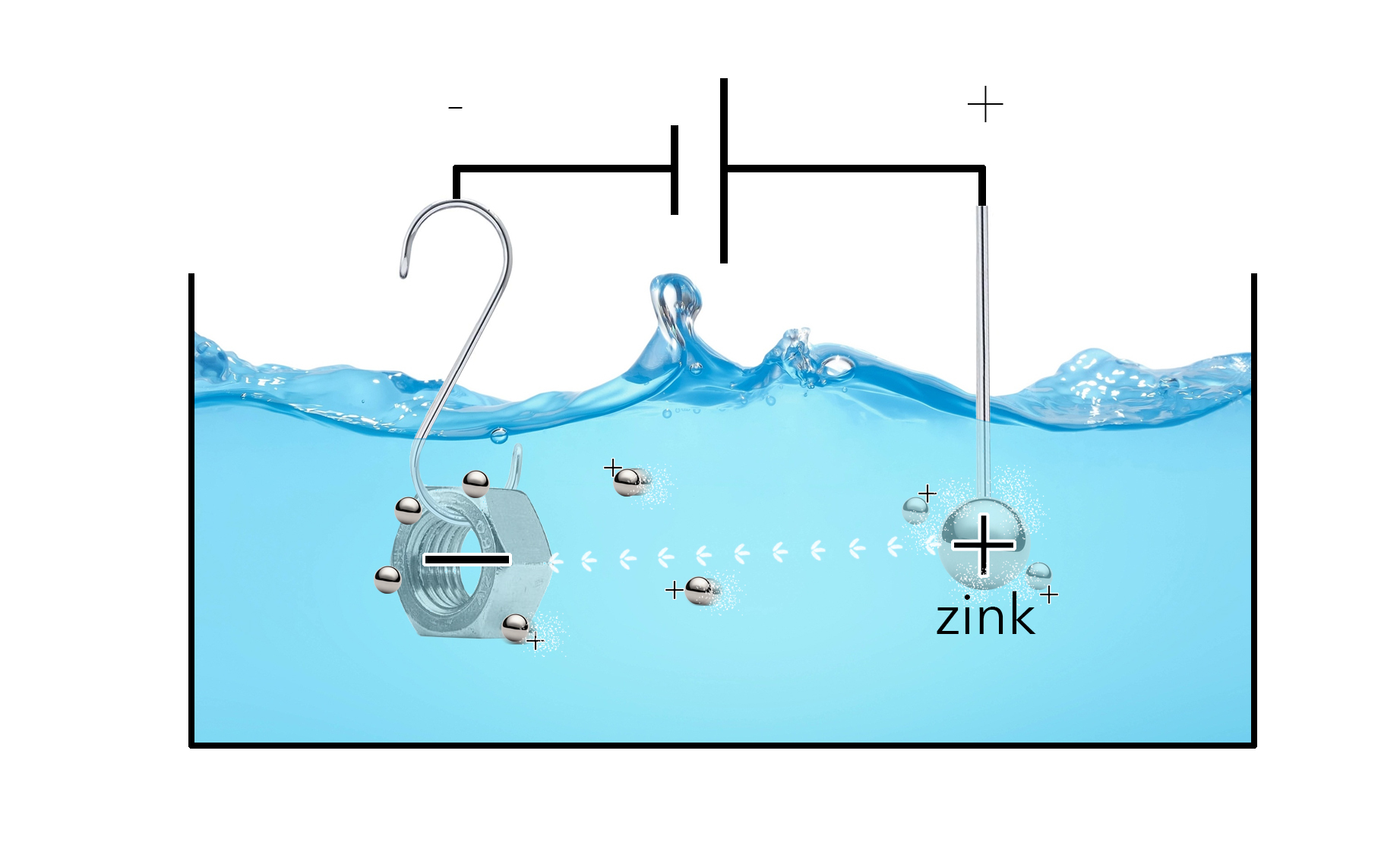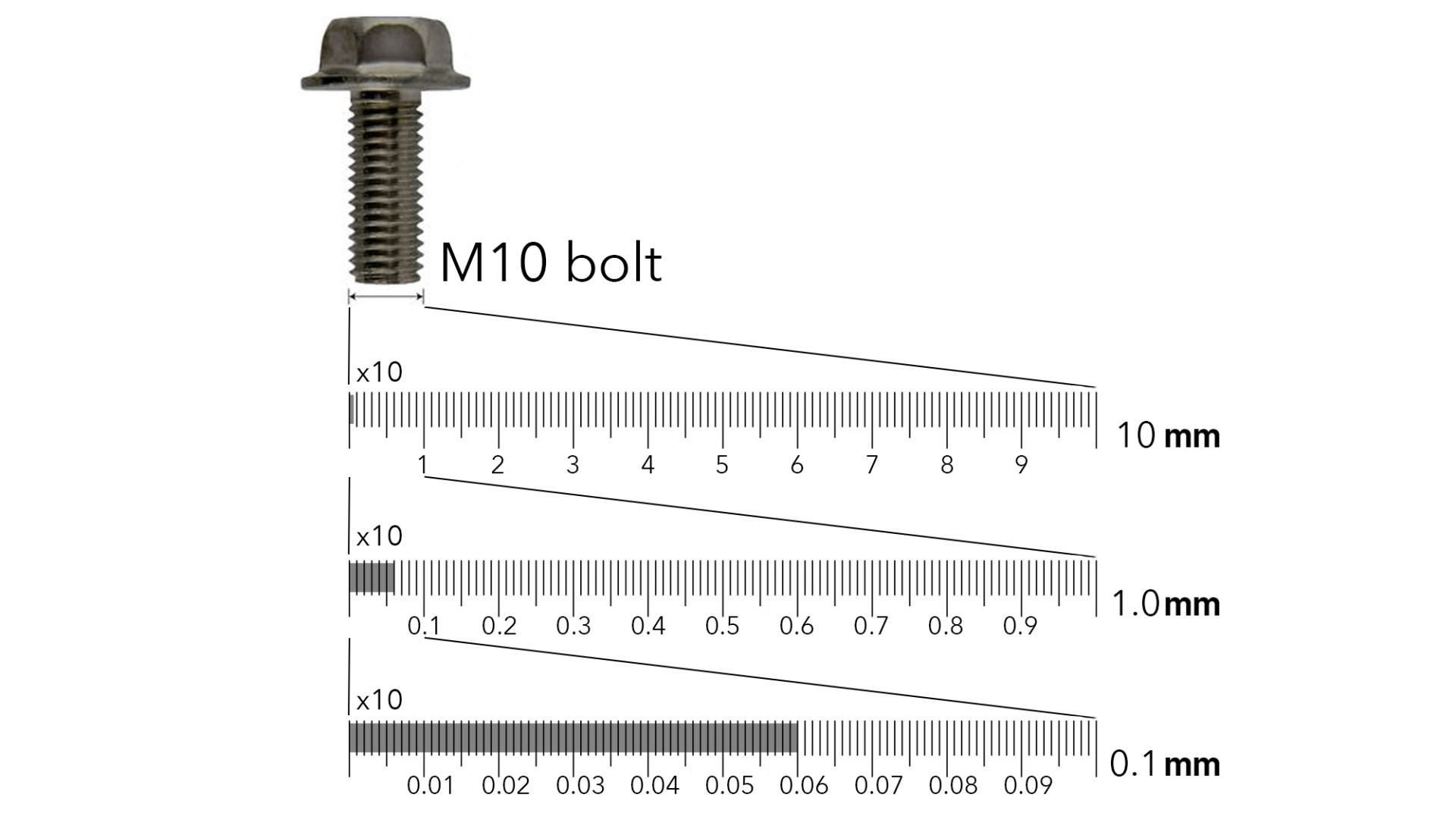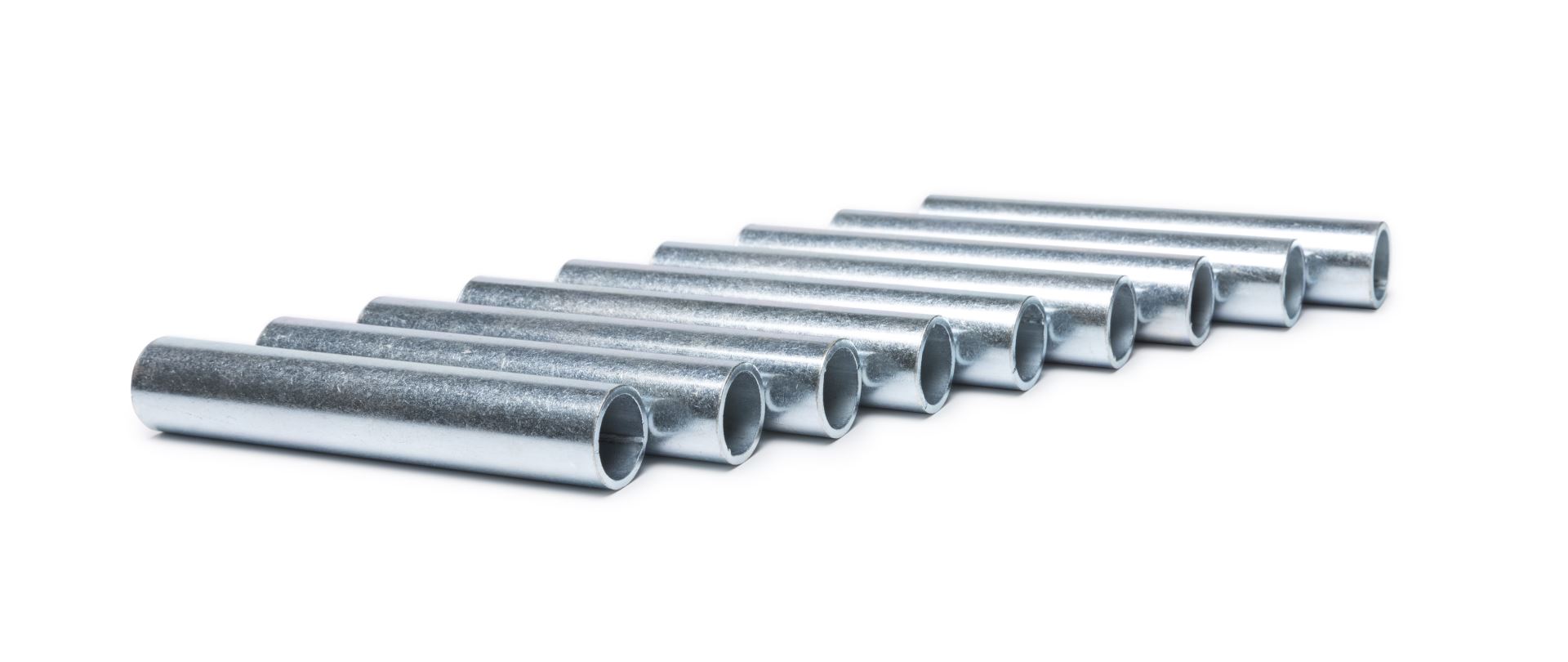How does our electrolytic process work and what are the pros and cons?
The principle
In the electrolytic process, a thin layer of material is deposited on the surface of your product by means of anode-cathode action. In the case of Verzinkerij Twente, the material that is deposited is zinc, or an alloy of zinc and nickel.Your material forms part of the process and, due to the applied negative charge, draws the zinc (and nickel) ions from the surrounding liquid. What is created is a thin, shiny but especially very good corrosion-resistant layer. The life of your product is extended and your product gets an attractive appearance.

The four steps
The application of the zinc layer is the third step in our electrolytic process. This step is preceded by degreasing and staining.Degreasing
As a first step, your product is degreased. Remaining oil from the production process, fat from the brewing bank or preservatives are rinsed here with a strong degreasing of your product.
Pickling
In the second step, the surface of your product is pickled. Any rolled casing is removed, the slag is stained from the welds and the product is made 'active', it means that it is optimally capable of picking up and retaining zinc (nickel). Perfect adhesion is guaranteed.
Applying Zinc-(nickel)
The product is hung in the zinc bath and provided with a negative charge with which the actual process starts. Depending on the agreed specifications, the desired layer thickness is deposited here. The thicker the layer needs to be, the longer this process step will take.
Passivation
A lesser known step in the galvanisation process is the passivation step. The zinc or zinc-nickel layer itself is gray in color. However, zinc also reacts with oxygen, creating a white rash on your product. To protect the applied layer from this oxidation, a passivation layer is applied as the final step. This closes the zinc (nickel) layer, gives the product gloss and, not entirely unimportant, ultimately determines the color of the product, completely in line with what you determine what the look of your product should be. The possibilities that we offer in this are clearly arranged on the product page.
Benefits
The electrolytic galvanisation of your products offers many advantages. The most important we have summarized below for you.- Rust formation is counteracted by the high degree of corrosion resistance.
- The applied layer of zinc is thin, so you do not have to take anything into account in your measurements;
- Also complicated shapes (construction work) can be galvanized;
- The steel base remains cold: the original shape is retained;
- The surface of the zinc layer is smooth and optically attractive;
- The zinc (nickel) layer provides an excellent substrate for powder coating or wet paint;
- Chemical post-treatment (passivation) contributes to an extra corrosion protection and appearance of the zinc, taking into account specific customer requirements;
- Your materials can be bent after the process without letting go of the zinc layer or damaged.
What scale?
The below image shows on which scale we work. The standard applied layer thickness is 6 microns, or 0.006 mm.The choice for Verzinkerij Twente means for you as a customer that passages will remain intact.
This will lower your cost price and thus your gross margin.

 Nederlands
Nederlands Deutsch
Deutsch English
English
